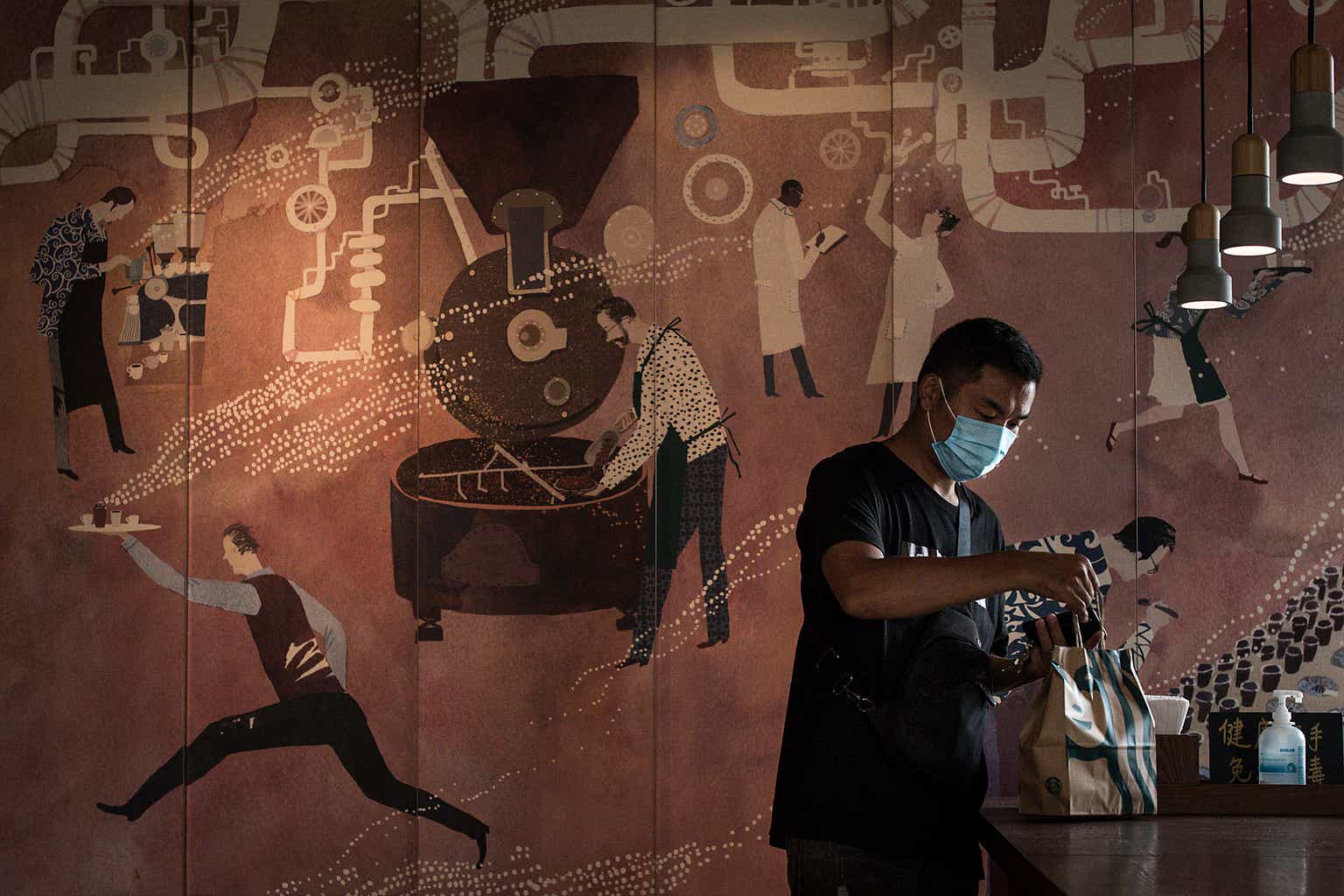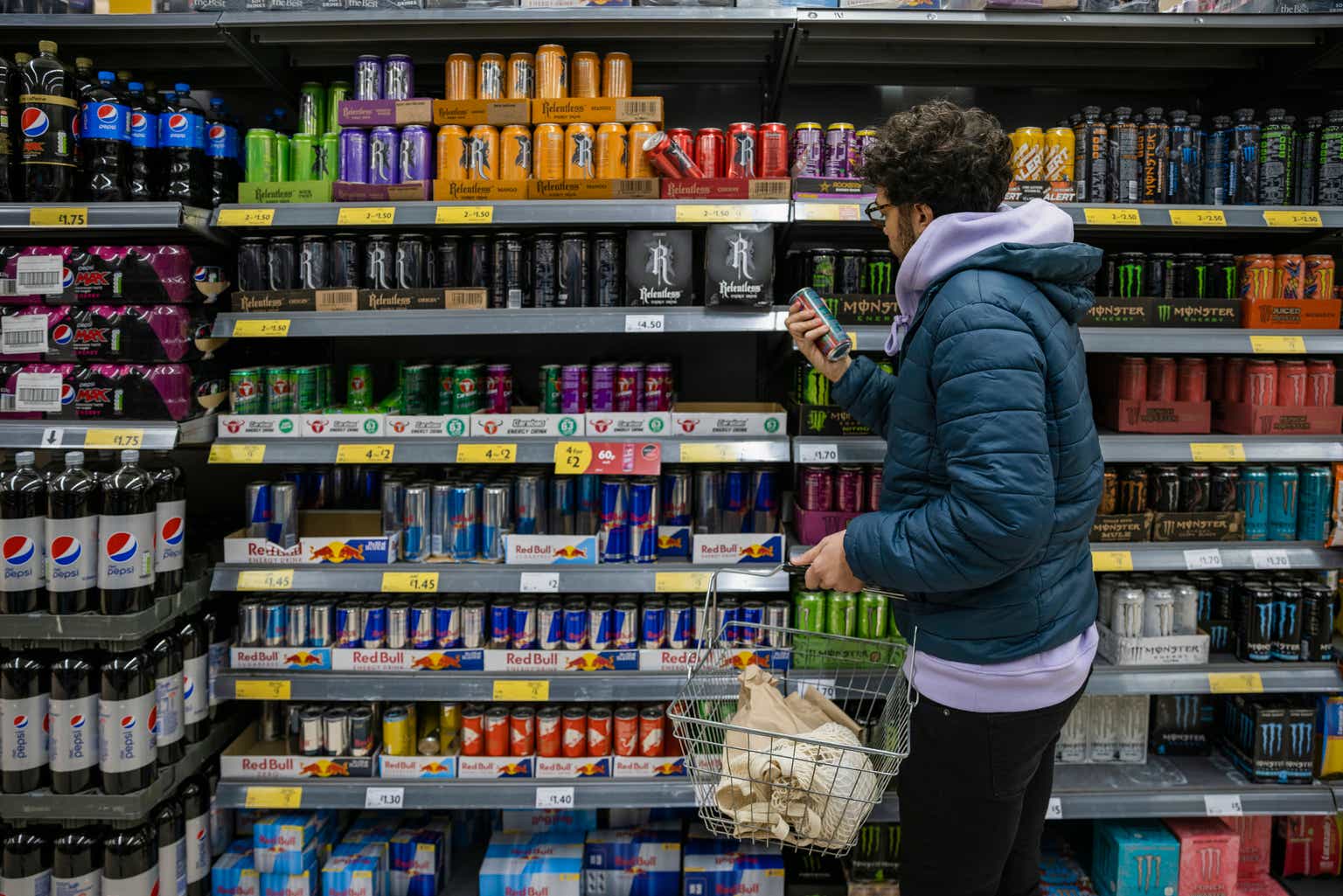Getty Images/Getty Images News
Starbucks’ (NASDAQ:SBUX) robust fiscal 2Q23 results show the company’s resilience and growth potential in both the North American and Chinese markets. We are long-term bullish on Starbucks and maintain a Buy rating on the stock, as the company’s achievements in expanding its active rewards membership base, store network, and maintaining a strong employee value proposition bode well for its future performance.
Q2 Earnings: Strong Quarter But No Guidance Upside
Starbucks recently reported robust fiscal 2Q23 results, surpassing expectations in both North America and China. In the U.S., comparable sales grew by 12%, outperforming the anticipated 8.8% growth, backed by a 5% increase in check size and a 6% rise in traffic. Internationally, same-store sales increased by 7%, notably ahead of the Street estimates of 1.6%, primarily due to China’s same-store sales growth of 3.0%, which defied expectations of a 7.3% decline. On an earnings basis, adjusted EPS of $0.74 exceeded the consensus of $0.64.
A significant achievement for Starbucks during this quarter was the expansion of its active Starbucks Rewards membership in the U.S., reaching 30.8 million members and marking a solid 15% YoY growth. Moreover, rewards members accounted for 57% of the company’s U.S. revenue in Q2, the highest contribution ever recorded, representing a 3% YoY increase. The growth in active rewards members is a crucial factor in maintaining consistent demand, and Starbucks plans to continue investing in and leading this area.
In addition to customer loyalty, Starbucks’ store network is also expanding. The company added 363 new stores in the quarter, an 8% YoY growth. By the end of the fiscal year, Starbucks aims to reach 20,000 stores across the International segment, aligning with the growth strategy presented at its Investor Day. China is expected to meet its 13% net new store growth target, while the Asia Pacific, EMEA, and Latin American markets will contribute significantly to the company’s overall global growth.
China’s Q2 comp growth of 3% exceeded expectations, with a notable 30% growth in March as the country started to recover from mobility restrictions due to the pandemic. As restrictions were lifted, customers returned to stores, driving a broad-based recovery across trade zones, dayparts, and city tiers.
Starbucks’ strong employee value proposition and improved scheduling processes have led to lower attrition rates and greater retail talent stabilization. The average hours per week for partners increased by 4%, which positively impacts their compensation. This is an important metric and labor issues have plagued the company in recent times.
Despite the strong quarterly results, Starbucks has not raised its fiscal year guidance, citing economic uncertainties and a moderating recovery in China. Nonetheless, the company remains optimistic about its growth trajectory, reaffirming its guidance for the fiscal year.
Starbucks’ impressive fiscal 2Q23 results demonstrate its resilience and growth potential in both the North American and Chinese markets. The company’s success in expanding its active rewards membership base and store network, as well as maintaining a strong employee value proposition, bodes well for its future performance. While some investors may be concerned about the lack of a fiscal year guidance raise, the company’s overall momentum and optimism should not be overlooked. In addition, we are mindful that this is the new CEO’s first call without Howard Schultz, Starbuck’s founder, on the call, so he may be taking a conservative approach.
Competitive Advantages
In the world of investing, it is essential to take a step back from quarterly results and focus on the bigger picture, particularly when evaluating a company like Starbucks. Starbucks holds a unique position in the market with several competitive advantages, such as its pure size, agility, innovation, and ability to reach consumers effectively.
Starbucks’ sheer size and non-franchise structure enable the company to make decisions and execute them rapidly. This nimbleness offers a significant competitive advantage, allowing Starbucks to implement and promote innovative concepts swiftly. For example, Starbucks was able to introduce and popularize egg bites, an unconventional offering that might have been challenging for smaller competitors to communicate to customers. The company’s size also allows it to educate millions of customers in a single day, merely by placing a poster on their walls.
Innovation is at the core of Starbucks’ success, and the company consistently pushes the envelope, not only in its food and beverage offerings but also in its consumer interface. Starbucks was an early adopter of online and phone ordering, as well as social media engagement. Moreover, they have continually expanded their product lineup beyond coffee, as evidenced by their Refresher line of non-coffee-based products.
While Starbucks has been somewhat slower to innovate on the food front, they have made significant strides in offering plant-based options and utilizing higher-quality ingredients to elevate the eating experience for mainstream consumers. By bringing more sophisticated ingredients to the masses, Starbucks demonstrates its commitment to delivering a high-end experience at a mainstream level.
Additionally, Starbucks has been a trailblazer in the coffee space. They were one of the first companies to introduce cold brew coffee, which has since revolutionized the iced coffee segment. This ability to reinvent a classic offering showcases Starbucks’ commitment to innovation and their knack for staying ahead of market trends.
When reflecting on Starbucks’ competitive advantages, it becomes evident that the company’s size, agility, innovation, and consumer engagement strategies have been critical to its success. By keeping these factors in mind, investors can gain a deeper understanding of Starbucks’ potential for growth and long-term performance, regardless of short-term fluctuations in quarterly results.
Financials & Valuation
Note: all data in this section comes from FactSet.
The company’s financial performance in fiscal 2022 exhibited mixed results, with total net revenues growing by 11% to reach $32.3 billion compared to $29.1 billion in fiscal 2021. This growth is commendable, even when considering the $576 million attributable to the extra week in fiscal 2021. However, despite the increase in revenues, it is important to note that consolidated operating income decreased to $4.6 billion in fiscal 2022, down from $4.9 billion in the previous year. This decrease in operating income, coupled with a contraction in operating margin from 16.8% to 14.3%, can be attributed to several factors.
Key contributors to the margin contraction include investments and growth in labor costs, specifically enhanced retail store partner wages and increased spend on new partner training and support. Inflationary pressures on commodities and the company’s supply chain, as well as sales deleverage related to COVID-19 pandemic impacts in the China market, also played a significant role. Further factors include a business mix shift and lower government subsidies. On the upside, sales leverage across markets outside of China and strategic pricing in North America partially offset these negative impacts.
Diluted earnings per share for fiscal 2022 dropped to $2.83 from $3.54 in fiscal 2021. This decrease was mainly due to the one-time gain from divesting the South Korea joint venture in the previous year and the extra week in fiscal 2021. Other contributing factors include investments in labor and inflationary pressures on commodities and the supply chain. Nevertheless, comparable store sales growth and lower restructuring costs somewhat mitigated the decrease in EPS.
Looking ahead to fiscal 2023, we anticipate a recovery in earnings, with EPS projected to increase by 15% to $3.40 and further accelerate by 20% to $4.08, driven by sales growth of 8.1% and 7.5%, respectively. The stock is currently trading at a forward 12-month consensus price-to-earnings ratio of 30x, within its 5-year range of 20 to 36x. However, it is worth mentioning that the stock is trading at a 66% premium compared to the S&P 500, reflecting the company’s expected accelerating earnings growth. This premium sits at the high end of its 5-year range of between 10% and 100%.
We believe shares are fairly valued and that the company offers attractive long-term growth for investors, especially over the next few years as the company recovers from COVID impacts, cost inflation reduction, decline in restructuring activities and aided by a strengthening China market.
Conclusion
In light of Starbucks’ impressive fiscal 2Q23 results, it is clear that the company has a strong foundation in the North American and Chinese markets. Although some investors may express concerns about the lack of a fiscal year guidance raise, Starbucks’ overall momentum and optimism should not be overlooked. We are long-term bullish on the stock, as the company’s success in expanding its active rewards membership base, store network, and strong employee value proposition signal promising prospects for the future. We maintain a Buy rating on Starbucks, confident in the company’s ability to deliver consistent growth and performance in the coming years.
Credit: Source link










































